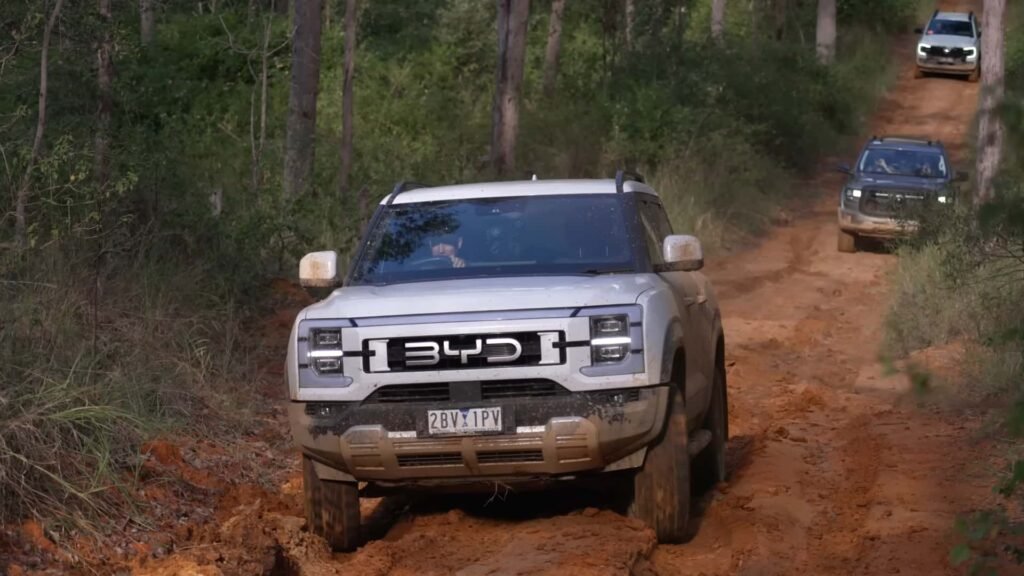Evaluating Plug-In Hybrid Pickups in the Australian Outback
Plug-in hybrid electric vehicles (PHEVs) are often considered a transitional technology between traditional gasoline-powered cars and fully electric vehicles (EVs). They promise the benefits of both worlds—fuel efficiency and all-electric driving for short distances, with the flexibility of a gas engine when needed. However, their performance can vary significantly depending on the conditions they face.
In a recent test, three PHEV pickups were driven alongside three diesel rigs through the challenging terrain of the Australian outback. The goal was to see how well these vehicles would handle long, grueling trips across vast stretches of desert, where charging infrastructure is limited and fuel efficiency becomes crucial.
The Vehicles Tested
The test featured three PHEV models: the BYD Shark, GWM Cannon Alpha, and Ford Ranger PHEV. These vehicles were compared against traditional diesel trucks, which are known for their reliability in remote areas. The journey covered 2,500 miles, with each vehicle towing a 5,500-pound trailer and navigating lonely highways and sandy dunes.
The video, produced by 4WD 24/7, highlights the challenges faced by the PHEVs, especially in terms of charging infrastructure. The team encountered difficulties finding reliable charging stations, which became a major issue during the trip. The need for DC fast charging, which takes about an hour to recharge high-voltage batteries, added to the complexity of the journey.
Performance and Efficiency
The BYD Shark, equipped with two electric motors and a 1.5-liter gas engine, had an all-electric range of 62 miles. However, during the test, it struggled with fuel efficiency, achieving only 9.4 miles per gallon when towing a trailer. This was due to the constant operation of the gas engine to keep the battery charged.
The GWM Cannon Alpha, with a larger battery offering 71 miles of all-electric range, performed slightly better but still faced challenges. It had a traditional transfer case and locking differential lockers, which gave it an edge in off-road situations. However, its overall efficiency was lower than expected, especially when towing.
The Ford Ranger PHEV, the only model available in the U.S., had the smallest battery among the three, allowing for around 30 miles of electric-only driving. While it performed better than the BYD Shark, it still fell short of the diesel rigs in terms of fuel efficiency.
Off-Road and Fuel Economy
When it came to off-road performance, the PHEVs managed to conquer sand dunes with ease. However, they faced more difficulty in muddy conditions. The Ford Ranger stood out as the only vehicle that struggled with large dunes, despite multiple attempts.
Fuel economy varied depending on the terrain. On the outback dirt roads at 50 mph, the PHEVs averaged around 23 mpg, while the diesel rigs achieved between 13.8 and 16.8 mpg. Without a trailer, the PHEVs managed around 16 mpg at highway speeds, which is decent given their weight of over 6,600 pounds.
The Future of PHEVs
The results of this test raise questions about the practicality of PHEVs for long-distance travel and heavy-duty tasks like towing. While they offer benefits for urban driving and short commutes, their limitations become apparent in extreme conditions.
However, the future may hold promise for extended-range EVs from brands like Scout and Ram. These vehicles are expected to feature larger batteries and more powerful engines, potentially improving efficiency and performance in challenging environments.
For now, the decision to choose a PHEV over a conventional diesel truck depends on individual needs and driving habits. If you primarily drive short distances and have access to reliable charging, a PHEV could be a good option. But for those venturing into remote areas or requiring heavy towing capabilities, a diesel truck might still be the better choice.

